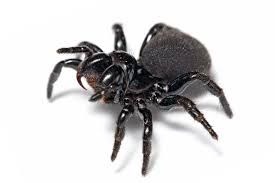Spider bite, sometimes called arachnidism in technical literature, is injury resulting from the bites of spiders. It is an unusual class of injury and the effects of most confirmed spider bites are trivial, even though nearly all species of spider are venomous. For all practical purposes arachnidism is substantial envenomation by a spider bite, their bites otherwise being medically insignificant. Depending on the species of spider and the  victim, arachnidism will have various effects, ranging from going practically unnoticed, through transient pain, to gangrene, or fatal neurotoxicity.[1]:455 Brazilian wandering spiders of the genus Phoneutria are considered today to be the most dangerous spider species to humans, venom-wise.
victim, arachnidism will have various effects, ranging from going practically unnoticed, through transient pain, to gangrene, or fatal neurotoxicity.[1]:455 Brazilian wandering spiders of the genus Phoneutria are considered today to be the most dangerous spider species to humans, venom-wise.
Bites from the widow spiders (genus Latrodectus) produce a special class of arachnidism, a neurotoxic condition known as Latrodectism.[2]
Similarly, bites from the recluse spiders (genus Loxosceles) cause the condition called Loxoscelism, which has become particularly notorious in recent decades as the predominant cause of "necrotic arachnidism", in which necrosis of the surrounding tissue is the major concern.[3][4]
Another medical condition that has historically been claimed to arise from spider bites is Tarantism, but there is no substantial evidence for the existence of this supposed condition.
Spider bite
Posted on at



